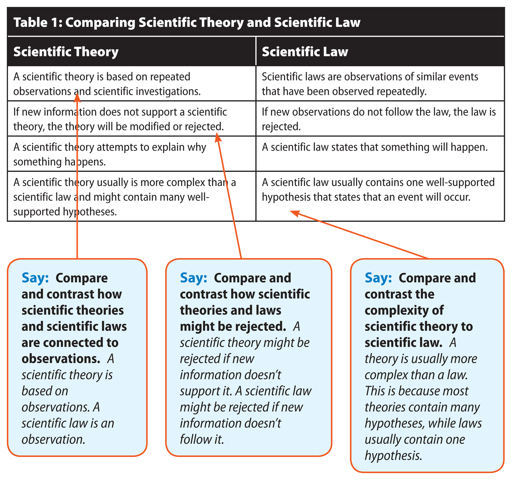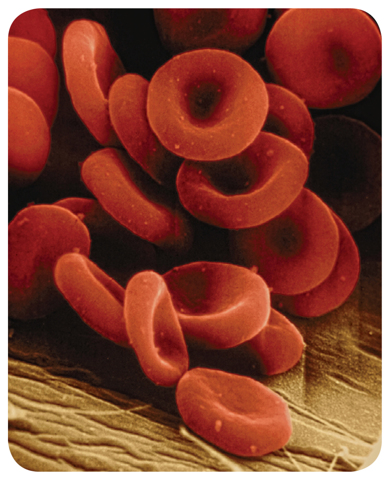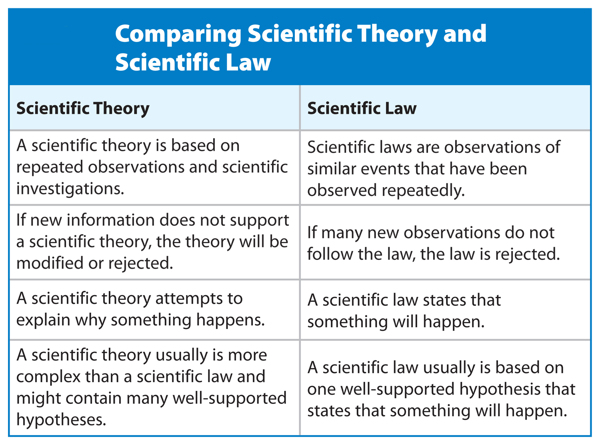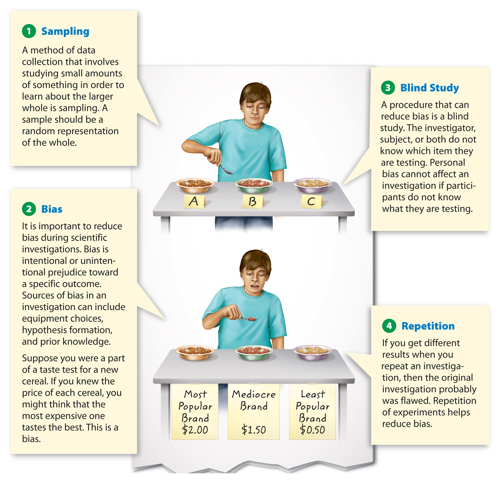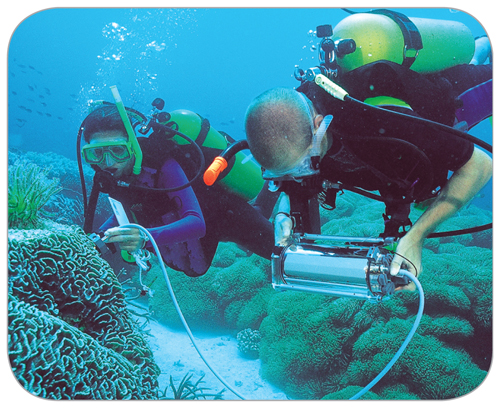Safety In the Science Lab
National Science Teacher's Association
Standards of Student Conduct in the Laboratory
and in the Field
1. Conduct yourself in a responsible manner at all times in the
laboratory. Frivolous activities,
mischievous behavior, throwing items, and
conducting pranks are prohibited.
2. Lab and safety information and procedures must be read ahead of
time. All verbal and written
instructions shall be followed in carrying out the activity or investigation.
instructions shall be followed in carrying out the activity or investigation.
3. Eating, drinking, gum chewing, applying cosmetics, manipulating
contact lenses, and other unsafe
activities are not permitted in the laboratory.
activities are not permitted in the laboratory.
4. Working in the laboratory without the instructor present is
prohibited.
5. Unauthorized activities or investigations are prohibited.
Unsupervised work is not permitted.
6. Entering preparation or chemical storage areas is prohibited at
all times.
7. Removing chemicals or equipment from the laboratory is
prohibited unless authorized by the
instructor.
instructor.
Personal Safety
8. ANSI Z87.1 approved chemical splash goggles or safety glasses,
as appropriate or directed by your
instructor, shall be worn at all times in the laboratory or field, including pre-laboratory work and
clean-up, unless the instructor specifically states that the activity does not require the use of
chemical splash goggles or safety glasses.
instructor, shall be worn at all times in the laboratory or field, including pre-laboratory work and
clean-up, unless the instructor specifically states that the activity does not require the use of
chemical splash goggles or safety glasses.
9. When an activity requires the use of laboratory aprons, the
apron shall be appropriate to the size of
the student and the hazard associated with the activity or investigation. The apron shall remain tied
throughout the activity or investigation.
the student and the hazard associated with the activity or investigation. The apron shall remain tied
throughout the activity or investigation.
10. All accidents, chemical spills, and injuries must be reported
immediately to the instructor, no
matter how trivial they may seem at the time. Follow your instructor’s directions for immediate
matter how trivial they may seem at the time. Follow your instructor’s directions for immediate
treatment.
11. Dress appropriately for laboratory work by protecting your
body with clothing and shoes. This
means that you should use hair ties to tie back long hair and tuck into the collar. Do not wear
loose or baggy clothing or dangling jewelry on laboratory days. Acrylic nails are also a safety
hazard near heat sources and should not be used. Sandals or open-toed shoes are not to be worn
during any lab activities. Refer to prelab instructions. If in doubt, ask!
means that you should use hair ties to tie back long hair and tuck into the collar. Do not wear
loose or baggy clothing or dangling jewelry on laboratory days. Acrylic nails are also a safety
hazard near heat sources and should not be used. Sandals or open-toed shoes are not to be worn
during any lab activities. Refer to prelab instructions. If in doubt, ask!
12. Know the location of all safety equipment in the room. This
includes eye wash stations, the
deluge shower, fire extinguishers, the fume hood, and the safety blanket. Know the location of
emergency master electric and gas shut offs and exits.
13. Certain classrooms may have living organisms including plants in aquaria or other containers.
Students must not handle organisms without specific instructor authorization. Wash your hands
with soap and water after handling organisms and plants.
deluge shower, fire extinguishers, the fume hood, and the safety blanket. Know the location of
emergency master electric and gas shut offs and exits.
13. Certain classrooms may have living organisms including plants in aquaria or other containers.
Students must not handle organisms without specific instructor authorization. Wash your hands
with soap and water after handling organisms and plants.
14. When an activity or investigation requires the use of
laboratory gloves for hand protection, the
gloves shall be appropriate for the hazard and worn throughout the activity.
gloves shall be appropriate for the hazard and worn throughout the activity.
Specific Safety Precautions Involving
Chemicals and Lab Equipment
15. Avoid inhaling in fumes that may be generated during an
activity or investigation.
16. Never fill pipettes by mouth suction. Always use the suction
bulbs or pumps.
17. Do not force glass tubing into rubber stoppers. Use glycerin
as a lubricant and hold the tubing
with a towel as you ease the glass into the stopper.
18. Proper procedures shall be followed when using any heating or flame producing device especially
gas burners. Never leave a flame unattended.
with a towel as you ease the glass into the stopper.
18. Proper procedures shall be followed when using any heating or flame producing device especially
gas burners. Never leave a flame unattended.
19. Remember that hot glass looks the same as cold glass. After
heating, glass remains hot for a very
long time. Determine if an object is hot by placing your hand close to the object but do not touch
it.
long time. Determine if an object is hot by placing your hand close to the object but do not touch
it.
20. Should a fire drill or other evacuation emergency occur during
an investigation or activity, make
sure you turn off all gas burners and electrical equipment and exit the room as directed.
sure you turn off all gas burners and electrical equipment and exit the room as directed.
21. Always read the reagent bottle labels twice before you use the
reagent. Be certain the chemical
you use is the correct one.
you use is the correct one.
22. Replace the top on any reagent bottle as soon as you have
finished using it and return the reagent
to the designated location.
to the designated location.
23. Do not return unused chemicals to the reagent container.
Follow the instructor’s directions for the
storage or disposal of these materials.
storage or disposal of these materials.
Standards For Maintaining a Safer Laboratory
Environment
24. Backpacks and books are to remain in an area designated by the
instructor and shall not be
brought into the laboratory area.
brought into the laboratory area.
25. Never sit on laboratory tables.
26. Work areas should be kept clean and neat at all times. Work
surfaces are to be cleaned at the end
of each laboratory or activity.
of each laboratory or activity.
27. Solid chemicals, metals, matches, filter papers, broken glass,
and other materials designated by
the instructor are to be deposited in the proper waste containers, not in the sink. Follow your
instructor’s directions for disposal of waste.
the instructor are to be deposited in the proper waste containers, not in the sink. Follow your
instructor’s directions for disposal of waste.
28. Sinks are to be used for the disposal of water and those
solutions designated by the instructor.
Other solutions must be placed in the designated waste disposal containers.
Other solutions must be placed in the designated waste disposal containers.
29. Glassware is to be washed with hot, soapy water and scrubbed
with the appropriate type and sized
brush, rinsed, dried, and returned to its original location.
brush, rinsed, dried, and returned to its original location.
30. Goggles are to be worn during the activity or investigation,
clean up, and through hand washing.
Eyewash Sign | Safety Shower Sign | First Aid Sign | Defibrillator Sign |
Fire Blanket Safety Sign | Radiation Symbol | Biohazard | Radioactive Symbol |
Ionizing Radiation Symbol | Recycling Symbol | Skull and Crossbones | Toxic |
Chemical Weapon Symbol | Biological Weapon Symbol | Nuclear Weapon Symbol |



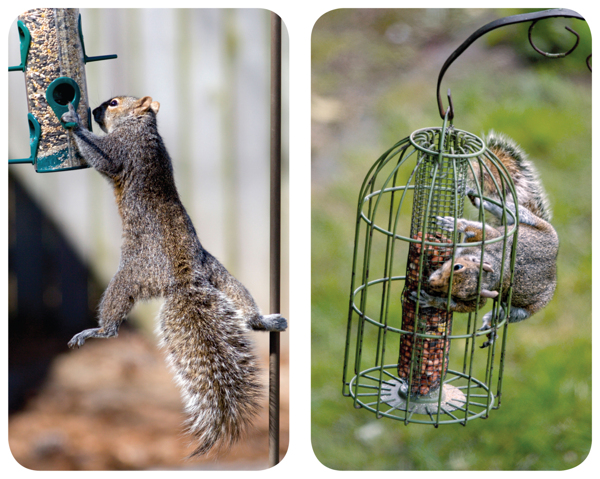



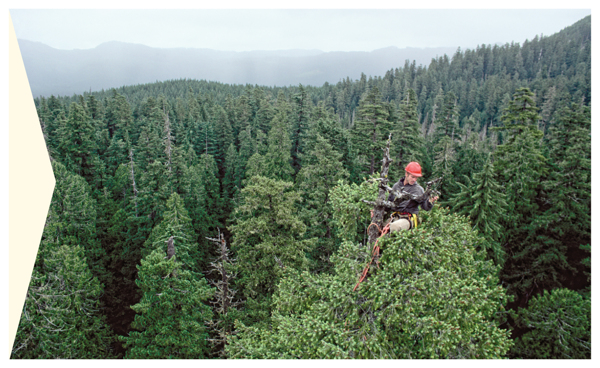
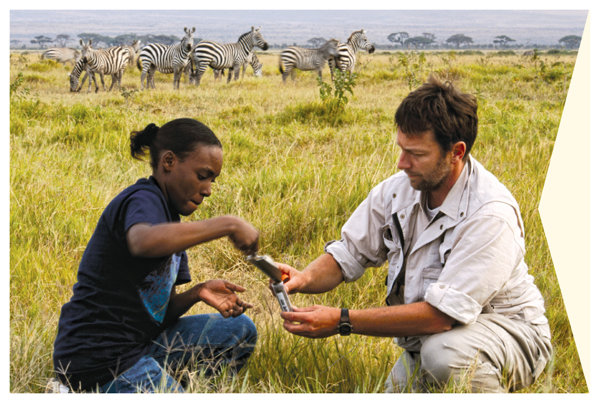
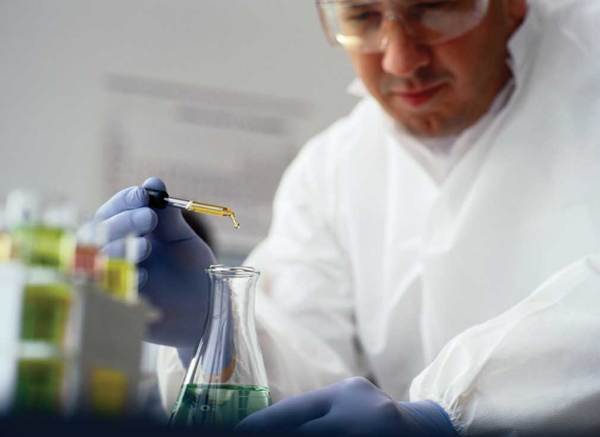
 What happens if a hypothesis is not supported?
What happens if a hypothesis is not supported?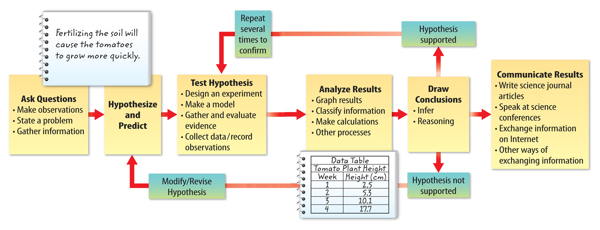


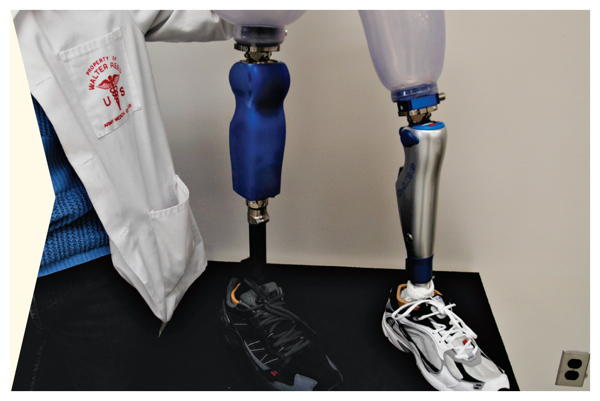
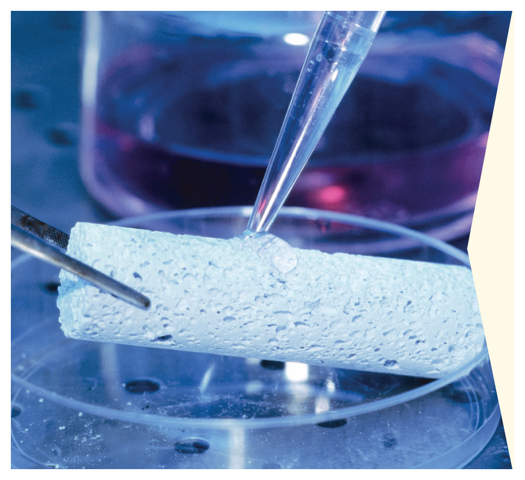
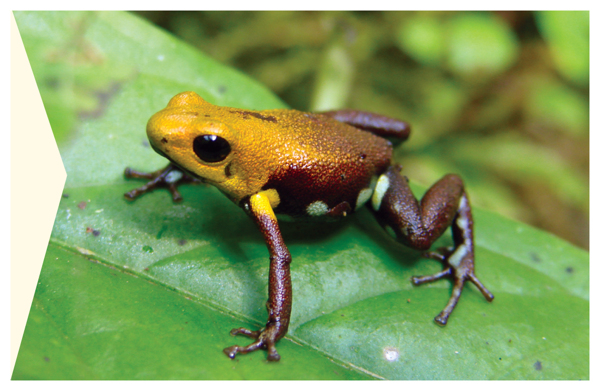
 Reading Check How do scientific theories and scientific laws compare?
Reading Check How do scientific theories and scientific laws compare? 